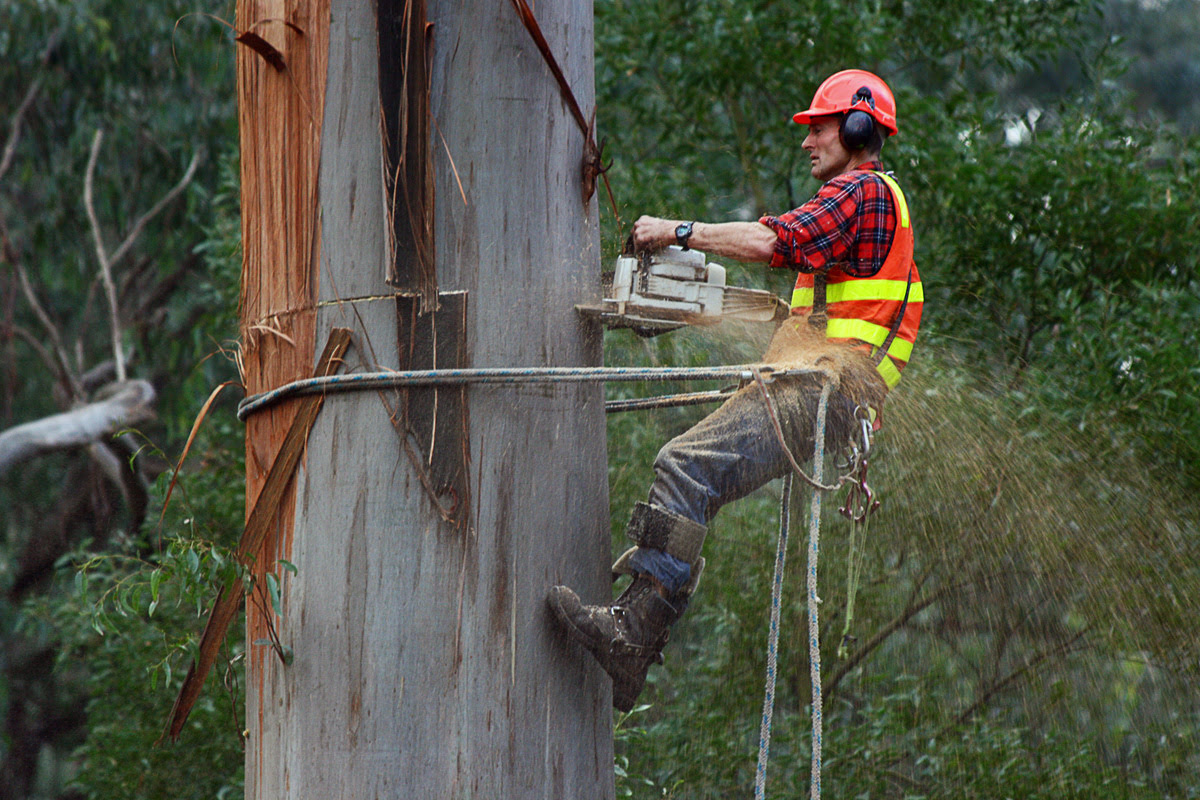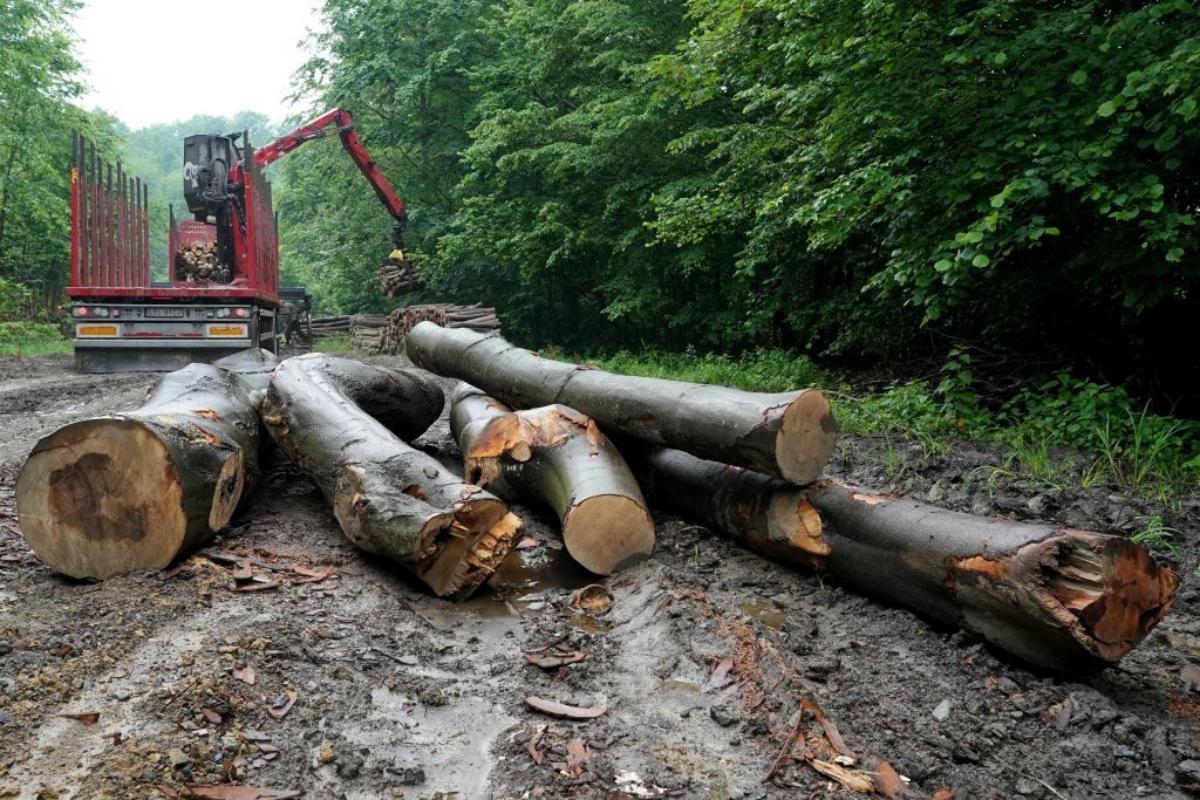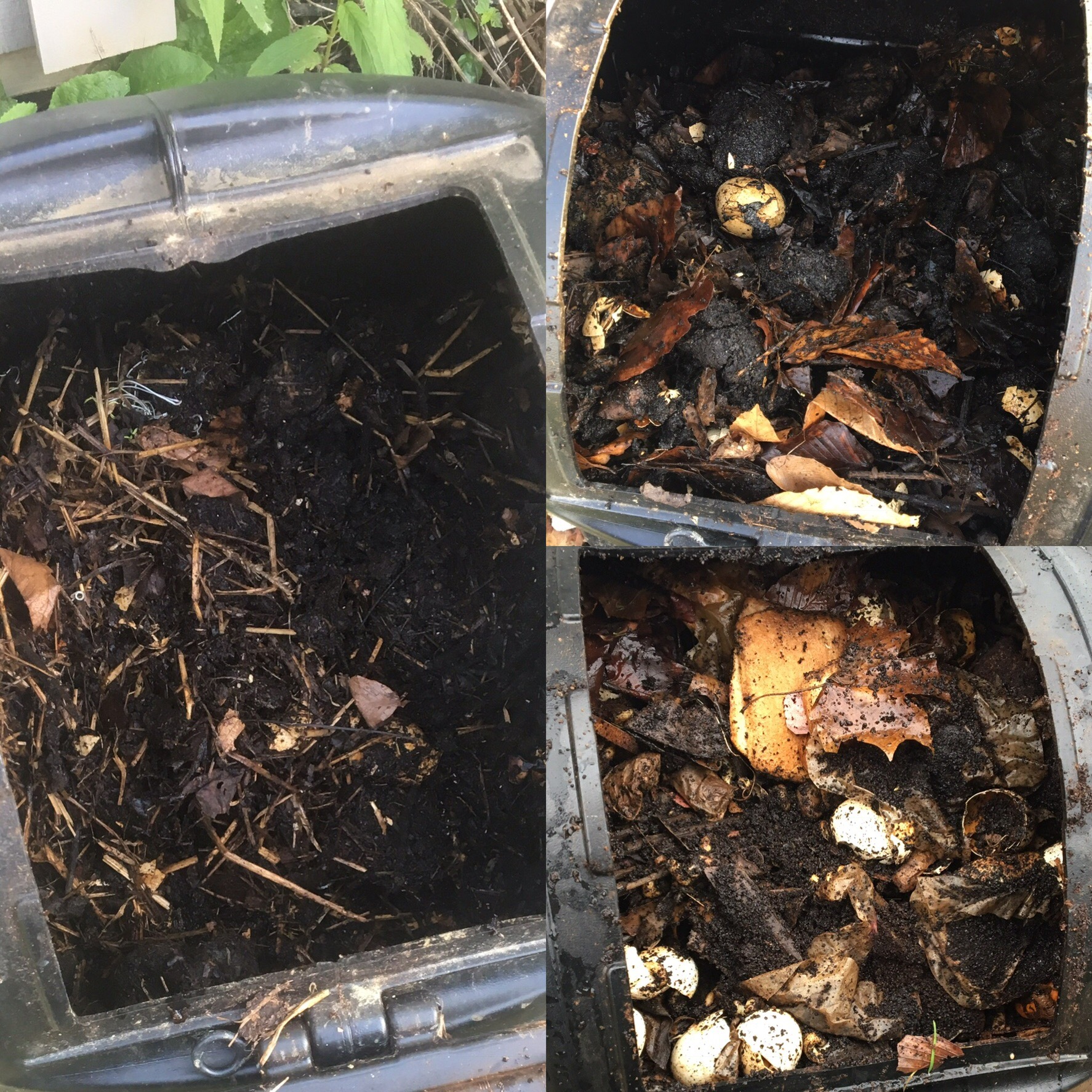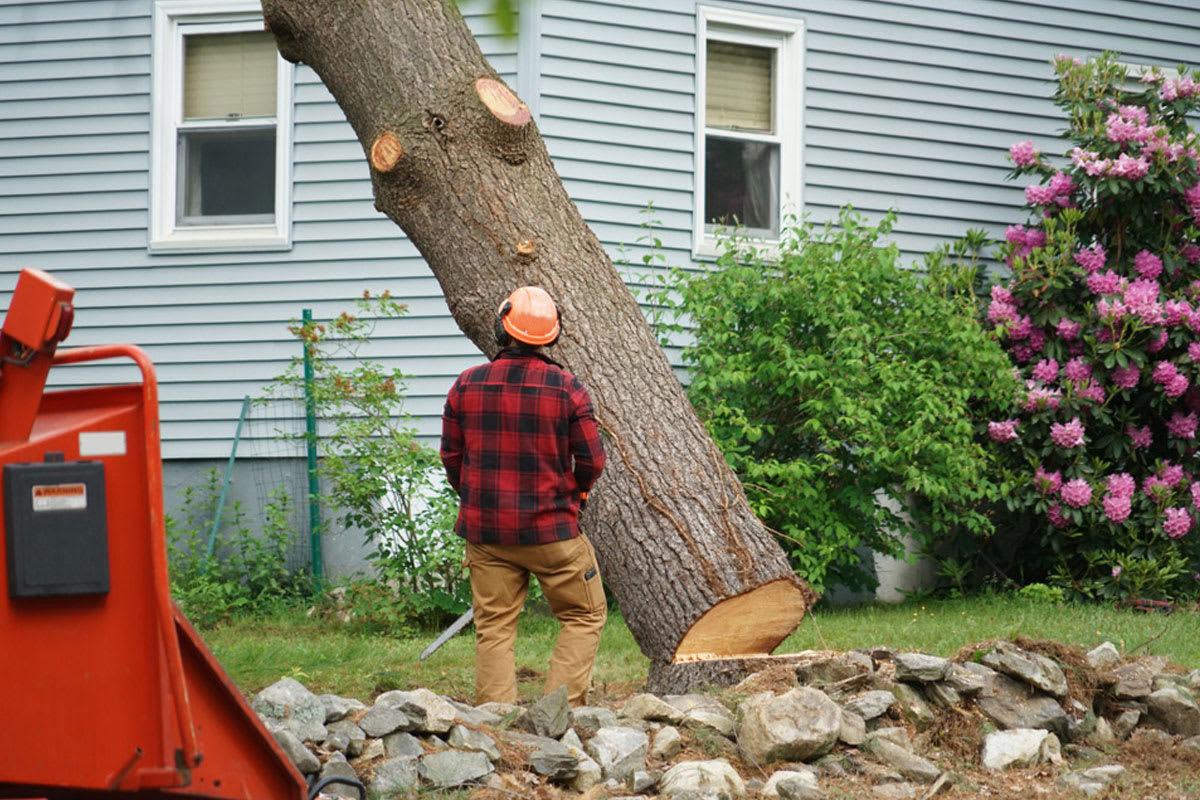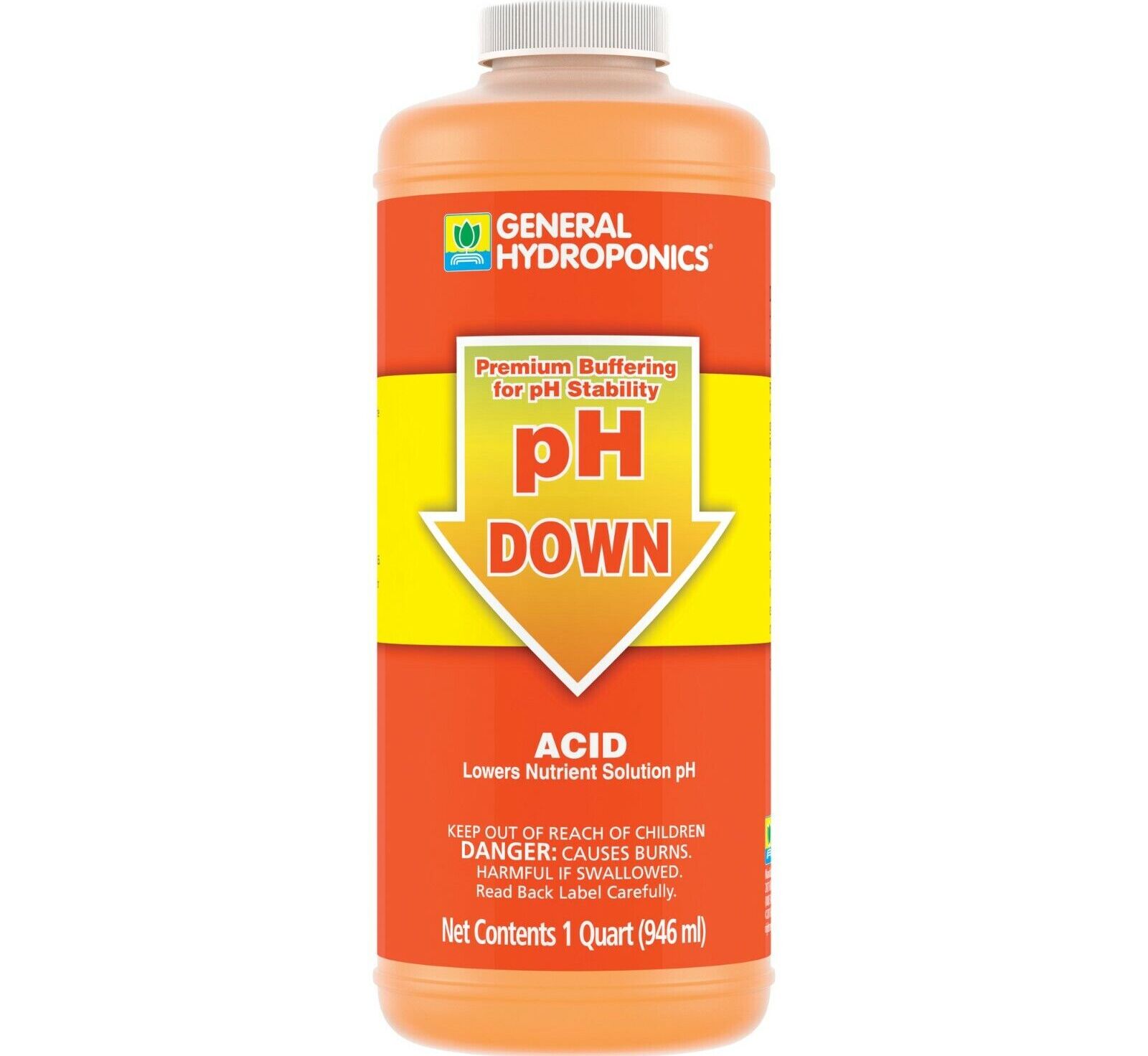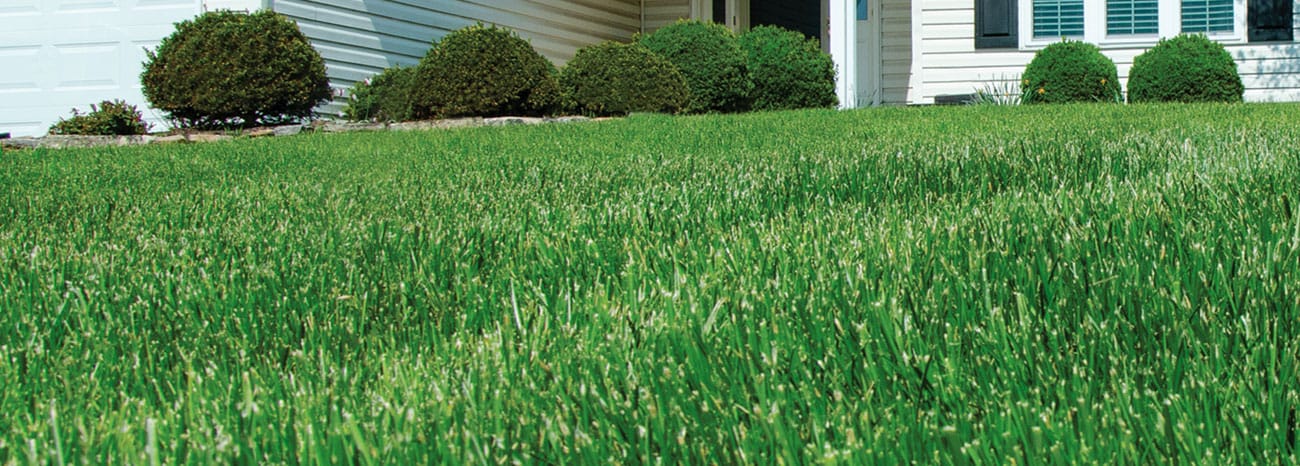Home>Gardening Techniques>DIY Projects>How To Cool Down Greenhouse


DIY Projects
How To Cool Down Greenhouse
Modified: January 22, 2024
Looking to cool down your greenhouse? Check out these DIY projects for effective ways to regulate temperature and create a comfortable growing environment.
(Many of the links in this article redirect to a specific reviewed product. Your purchase of these products through affiliate links helps to generate commission for Chicagolandgardening.com, at no extra cost. Learn more)
Table of Contents
- Introduction
- Importance of Cooling Greenhouses
- Common Challenges in Greenhouse Cooling
- Strategies for Cooling Down a Greenhouse
- Shade Cloth and Screens
- Natural Ventilation
- Evaporative Cooling
- Exhaust Fans and Ventilation Systems
- Cooling Systems using Misting and Fogging
- Plant Selection and Arrangement
- Insulation and Shade Structures
- Monitoring and Control Systems
- Conclusion
Introduction
Welcome to the world of greenhouse gardening! Greenhouses offer a controlled and nurturing environment for plants to thrive, allowing avid gardeners to grow their favorite flowers, herbs, and vegetables all year round. However, one crucial aspect of greenhouse management is often overlooked – cooling.
As the temperature inside the greenhouse rises, plants can be subjected to immense stress, resulting in wilted leaves, stunted growth, and decreased yield. Maintaining an optimal greenhouse temperature is vital for the health and productivity of your plants. In this article, we will explore the importance of cooling greenhouses, the common challenges faced, and strategies to effectively cool down your greenhouse.
With proper cooling techniques, you can create an ideal microclimate within your greenhouse, ensuring that your plants are comfortable, thriving, and producing bountiful harvests. So let’s delve into the fascinating world of greenhouse cooling and discover the strategies that will help you achieve success in your gardening endeavors.
But first, why is cooling a greenhouse so important?
Greenhouses are designed to capture and retain heat, creating a warm and favorable environment for plants to grow. However, excessive heat can be detrimental to plant health, leading to heat stress, root damage, and even death. Just as we seek refuge in the shade or air-conditioning when temperatures soar, plants also require respite from the scorching heat.
Moreover, certain plants have specific temperature requirements, and failure to maintain the correct temperature can result in poor growth and decreased crop quality. For example, cool-season vegetables such as lettuce and spinach thrive in cooler temperatures, while tropical plants like orchids and bananas require warmer conditions.
By implementing effective cooling strategies, you can regulate and maintain the temperature within your greenhouse, harnessing the power of nature and technology to create an optimal growing environment. With proper cooling, you’ll not only protect your plants from heat stress but also extend the growing season and optimize their growth potential.
Now that we understand the significance of greenhouse cooling, let’s explore the common challenges faced by greenhouse owners and the strategies to overcome them. By addressing these challenges head-on, you’ll be well-equipped to create a flourishing and comfortable greenhouse oasis for your plants.
Importance of Cooling Greenhouses
When it comes to greenhouse gardening, effective cooling is of paramount importance. Let’s delve deeper into why cooling your greenhouse is crucial for the health and productivity of your plants.
1. Temperature Regulation: Greenhouses are designed to trap and retain heat, creating a warm and controlled environment. However, as the temperature within the greenhouse rises, it can surpass the optimal range for plant growth. Excessive heat can lead to heat stress, which can cause irreversible damage to your plants. Cooling your greenhouse helps to regulate the temperature, ensuring the comfort and well-being of your plants.
2. Preventing Heat Stress: Plants have a specific temperature range in which they thrive. When temperatures soar, plants can suffer from heat stress, which manifests as wilting leaves, reduced growth, and decreased yield. By actively cooling your greenhouse, you can prevent heat stress and create an ideal growing environment for your plants. This allows them to reach their full potential and produce healthy, vibrant foliage and bountiful harvests.
3. Extending Growing Season: Greenhouses provide the opportunity to extend the growing season, enabling year-round cultivation of plants. However, during hot summer months, high temperatures can limit plant growth and productivity. By implementing effective cooling strategies, you can create a conducive environment even in the hottest of months, allowing you to continue gardening and reaping rewards throughout the year.
4. Easing Transitions: Greenhouses play a vital role in providing a transition zone for seedlings before they are ready to be planted outdoors. When moving plants from a controlled environment to the harsher conditions outside, it is important to gradually acclimate them to the change. Cooling your greenhouse helps in this transition by providing a cooler and more stable environment, preparing your plants for successful transplantation.
5. Optimal Crop Quality: Many crops require specific temperature conditions to produce high-quality yields. From cool-season vegetables to delicate flowers, maintaining the correct temperature range is essential for optimal crop development. Cooling your greenhouse ensures that your plants receive the ideal environment to thrive, resulting in superior crop quality, appearance, and taste.
6. Pest and Disease Prevention: High temperatures in greenhouses can create favorable conditions for pests and diseases to thrive. By keeping the temperature in check, you can reduce the risk of infestations and outbreaks. Cooler temperatures also help to increase humidity levels, which can deter certain pests and pathogens. Effective cooling measures act as a natural defense mechanism, ensuring the health and vitality of your plants.
Now that we understand the importance of cooling our greenhouses, let’s explore the common challenges faced in greenhouse cooling and the strategies to overcome them. By implementing the right techniques, you can create an optimal growing environment for your plants and nurture their growth successfully.
Common Challenges in Greenhouse Cooling
Cooling a greenhouse presents several challenges that need to be addressed to maintain an optimal growing environment for your plants. Let’s explore some of the common challenges faced in greenhouse cooling:
1. High Temperatures: Greenhouses can experience extreme heat buildup, particularly during the summer months. The intense sunlight and limited airflow can cause the temperature to skyrocket, surpassing the optimal range for plant growth. Managing and maintaining the temperature within a suitable range is crucial to prevent heat stress and ensure your plants thrive.
2. Humidity Control: Along with temperature, humidity levels play a vital role in greenhouse cooling. High humidity can create a stuffy and uncomfortable environment, leading to an increased risk of diseases such as powdery mildew and botrytis. On the other hand, low humidity can cause issues like dehydration and stunted growth. Striking the right balance of humidity is essential for a healthy greenhouse ecosystem.
3. Inadequate Air Circulation: Insufficient airflow within the greenhouse can hinder effective cooling. Stagnant air can trap heat and moisture, creating a breeding ground for pests and diseases. Proper air circulation is essential to distribute cool air evenly throughout the greenhouse and promote transpiration, allowing plants to stay cool and maintain optimal health.
4. Energy Consumption: Cooling a greenhouse requires energy, and the cost of utilities can be a concern for greenhouse owners. Running fans, cooling systems, and other equipment can lead to high energy consumption, impacting the financial viability of greenhouse operations. Finding energy-efficient solutions and optimizing cooling practices can help minimize energy usage and reduce costs.
5. Site-Specific Challenges: Each greenhouse has its unique set of challenges based on its location and environmental factors. Factors like geographic location, elevation, prevailing winds, and proximity to neighboring structures can impact the greenhouse microclimate. Understanding and addressing site-specific challenges play a crucial role in devising an effective cooling strategy.
6. Changing Weather Conditions: Weather patterns are often unpredictable, and sudden temperature fluctuations can pose challenges in greenhouse cooling. Rapid temperature changes can stress plants and disrupt their growth cycle. Adapting and adjusting cooling strategies based on weather conditions are essential to ensure a stable and suitable climate for your plants.
7. Cost Considerations: Setting up and maintaining a cooling system can come with a financial burden. Investing in equipment, installation, and ongoing maintenance costs can add up. Striking a balance between effective cooling and cost considerations is crucial for greenhouse owners to make sustainable and economically viable decisions.
Successfully tackling these challenges requires a combination of proper planning, effective systems, and regular monitoring. In the next section, we will explore strategies and techniques to cool down your greenhouse and overcome these challenges.
Strategies for Cooling Down a Greenhouse
Now that we understand the importance of greenhouse cooling and the challenges it presents, let’s explore some effective strategies to cool down your greenhouse and create an optimal growing environment for your plants.
1. Shade Cloth and Screens: Install shade cloth or screens on the roof and sides of the greenhouse to reduce the amount of direct sunlight entering. By blocking some of the intense sunlight, you can significantly lower the temperature inside the greenhouse.
2. Natural Ventilation: Take advantage of natural ventilation by strategically placing vents, windows, and doors. Open them during cooler times of the day or when there is a breeze to facilitate airflow and encourage heat dissipation.
3. Evaporative Cooling: Utilize the power of evaporation to cool the greenhouse. Place evaporative coolers or misting systems inside the greenhouse to release fine droplets of water, which evaporate and lower the temperature through the process of latent cooling.
4. Exhaust Fans and Ventilation Systems: Install exhaust fans to remove hot air and bring in cooler air from outside. Consider using temperature or humidity-controlled ventilation systems to automate the process and maintain optimal conditions.
5. Cooling Systems using Misting and Fogging: Install misting or fogging systems that release a fine mist or fog of water into the greenhouse. This creates a cooling effect as the water evaporates, reducing the temperature and increasing humidity.
6. Plant Selection and Arrangement: Choose plant varieties that are more tolerant of high temperatures and can thrive in greenhouse conditions. Arrange plants in a way that maximizes airflow and prevents overcrowding, allowing for better air circulation and heat dissipation.
7. Insulation and Shade Structures: Improve insulation in your greenhouse by using double-layered panels, insulating materials, or shade structures. This helps to regulate temperature fluctuations and reduce heat transfer from outside.
8. Monitoring and Control Systems: Invest in temperature and humidity sensors, as well as automation and control systems, to monitor and regulate the climate inside the greenhouse. This allows you to make adjustments based on real-time data and maintain optimal growing conditions.
Remember to combine these strategies based on your specific greenhouse requirements and environmental factors. It may be necessary to use multiple techniques simultaneously or modify them as per changing weather conditions.
By implementing these cooling strategies, you can create a comfortable and conducive environment for your plants, ensuring their health, productivity, and longevity. Proper cooling not only promotes optimal growth but also provides you with the opportunity to enjoy year-round gardening success.
Shade Cloth and Screens
Shade cloth and screens are effective tools for mitigating excessive sunlight and reducing the temperature inside a greenhouse. They provide a barrier that blocks a portion of the direct sunlight, helping to create a more comfortable environment for your plants.
Shade cloth is a woven material made from durable synthetic fibers or natural materials like cotton or hemp. It comes in various densities, allowing you to customize the level of shading based on your specific needs. Mesh screens are also commonly used, typically made of aluminum or plastic, with small openings that restrict the amount of sunlight entering the greenhouse.
Installing shade cloth or screens on the roof and walls of your greenhouse can significantly impact the temperature inside. The material filters out a percentage of the sunlight, reducing the intensity and heat buildup. This helps to prevent excessive heat stress on your plants and creates a more favorable growing environment.
When selecting shade cloth, consider the percentage of light transmission (also known as shade percentage) that suits your plants’ requirements. Lighter shading percentages, such as 30% or 40%, allow more sunlight to pass through, making them suitable for plants that prefer bright conditions. On the other hand, heavier shade cloth, such as 70% or 80%, is better suited for shade-loving plants or during particularly hot periods.
Additionally, shading can also provide other benefits beyond temperature control. It can help reduce water evaporation from the soil, preventing moisture loss and conserving water. Shading also provides protection against excessive wind, hail, or other environmental elements that could damage or stress your plants.
It’s important to note that while shade cloth and screens can effectively reduce heat, they also reduce the overall light levels inside the greenhouse. This reduction in light can have an impact on plant growth and development, particularly for light-dependent processes like photosynthesis. Therefore, it’s crucial to strike a balance between shading and light levels to ensure the health and productivity of your plants.
Regular maintenance of shade cloth is essential to keep it in optimal condition. Periodically check for any tears, damage, or deterioration, and replace or repair as needed. During the winter months or when the greenhouse doesn’t require as much shading, you can remove or retract the shade cloth to allow for increased light penetration.
By utilizing shade cloth or screens in your greenhouse, you can effectively reduce the amount of direct sunlight and lower the temperature inside. This simple yet effective strategy provides an immediate cooling effect and helps create a more suitable environment for the successful growth of your plants.
Natural Ventilation
Natural ventilation is a cost-effective and energy-efficient strategy for cooling down a greenhouse. It utilizes the power of airflow to regulate temperature, humidity, and air quality, creating a healthier and more comfortable environment for plants to thrive.
Strategic placement of vents, windows, and doors allows for efficient air exchange within the greenhouse. When designing or modifying your greenhouse, consider the prevailing wind direction and position vents or openings accordingly to take advantage of natural airflow.
During the cooler times of the day, such as early morning or late evening, as well as when there is a gentle breeze, you can open vents or windows to facilitate the entry of fresh air. This influx of air helps to flush out stale, hot air, lowering the overall temperature inside the greenhouse.
The movement of air through natural ventilation has several benefits. It helps dissipate heat that has accumulated during the day, preventing the greenhouse from becoming overly hot. Additionally, it aids in reducing humidity levels by exchanging moist air with drier outdoor air, which can help prevent the development of fungal diseases.
Properly designed ventilation systems utilize the principle of convection, where warm air rises and escapes through vents or louvers located at the top of the greenhouse, while cooler air enters through lower openings. This natural flow of air creates a gentle breeze, promoting transpiration in plants and assisting with the cooling process.
Consider incorporating automatic ventilation systems that are controlled by temperature or humidity sensors. These systems can open and close vents or windows based on pre-set thresholds, ensuring that the greenhouse remains within the desired temperature range. This automation eliminates the need for constant monitoring and manual adjustment, allowing for more precise control of the greenhouse climate.
It’s important to note that natural ventilation may not always be sufficient to cool down the greenhouse, especially during periods of extreme heat or when there is no breeze. In such cases, it may be necessary to supplement natural ventilation with other cooling strategies, such as shading or evaporative cooling.
Regular maintenance of ventilation systems is essential to ensure their effectiveness. Clean and clear vents, remove any obstructions, and repair any damages or leaks. Regularly check the seals around windows and doors to prevent air leaks that could compromise the efficiency of natural ventilation.
By harnessing the power of natural ventilation, you can effectively cool down your greenhouse while minimizing energy consumption. It’s a sustainable and practical approach that promotes healthy airflow and creates an environment that is conducive to plant growth and overall greenhouse success.
Evaporative Cooling
Evaporative cooling is a popular method used in greenhouses to effectively reduce temperatures. This technique harnesses the natural process of water evaporation to create a cooling effect, ensuring optimal conditions for plant growth.
The principle behind evaporative cooling is straightforward. As water molecules evaporate, they absorb heat energy from the surrounding air, lowering the temperature. This process, known as latent cooling, can significantly reduce the heat inside the greenhouse.
One common way to implement evaporative cooling is by using evaporative coolers or swamp coolers. These devices work by pulling in warm air from outside and passing it through water-saturated pads or screens. As the air flows through the moist pads, water evaporates, cooling the air before it is circulated back into the greenhouse.
Evaporative cooling is particularly effective in dry climates, where the evaporation process is faster and more efficient. It helps to increase humidity levels in the greenhouse, which can be beneficial for certain plant species that thrive in higher humidity environments.
Another form of evaporative cooling is through the use of misting systems. These systems release a fine mist of water droplets into the greenhouse, which quickly evaporate and cool the surrounding air. Misting provides immediate relief during hot periods and can be especially beneficial for heat-sensitive plants.
When implementing evaporative cooling, it’s crucial to strike a balance and avoid excessive humidity levels that can lead to plant diseases or issues like mold growth. Monitoring the relative humidity inside the greenhouse and adjusting the cooling systems accordingly ensures optimal conditions for plant growth.
It’s also important to note that evaporative cooling relies on a constant supply of water. Ensure that you have sufficient water sources and consider water conservation methods to minimize waste. Regular maintenance of evaporative cooling systems, including cleaning and replacing pads or filters, is essential to ensure their efficiency and longevity.
Evaporative cooling is a cost-effective and energy-efficient method for cooling greenhouses. By harnessing the power of water evaporation, you can effectively lower temperatures and create a more comfortable growing environment for your plants.
Exhaust Fans and Ventilation Systems
Exhaust fans and ventilation systems are essential components in greenhouse cooling, providing an effective way to remove hot air and facilitate air exchange. These systems promote proper airflow, helping to regulate temperature, humidity, and air quality within the greenhouse.
Exhaust fans play a key role in expelling hot, stale air from the greenhouse and replacing it with fresh, cooler air from outside. By removing hot air, these fans prevent heat buildup and create a more comfortable environment for plants.
Proper ventilation systems are designed to optimize airflow and create a natural cooling effect. They typically consist of intake vents located near the ground level and exhaust vents positioned at the top of the greenhouse structure. This design allows for the entry of cool air and the exit of warm air, facilitating efficient air circulation.
The use of ventilation systems provides several benefits for greenhouse cooling:
- Temperature Regulation: Effective ventilation helps to regulate the temperature inside the greenhouse by expelling hot air and allowing cooler air to enter. This prevents heat stress on plants and helps maintain optimal growing conditions.
- Humidity Control: Proper ventilation aids in controlling humidity levels within the greenhouse. By exchanging moist air with drier air from outside, ventilation helps prevent excessive moisture buildup, reducing the risk of fungal diseases and maintaining a healthier environment.
- Air Quality Improvement: Ventilation systems help to facilitate air exchange, removing pollutants, chemicals, and odors from the greenhouse. This creates cleaner, fresher air for your plants, promoting their overall health and vitality.
Consider using ventilation systems that are equipped with automated controls, such as thermostats or humidity sensors. These controls can regulate the opening and closing of vents or louvers based on pre-set thresholds, ensuring that the greenhouse remains within the optimal temperature and humidity range.
Additionally, consider using natural ventilation methods in conjunction with exhaust fans. Opening doors, vents, or windows during cooler times of the day or when there is a breeze can facilitate the entry of fresh air and enhance the effectiveness of the ventilation system.
Regular maintenance of the ventilation system is crucial to ensure its effectiveness. Clean exhaust fans regularly to remove any accumulated dirt or debris that may hinder their performance. Inspect and clean vents or louvers to keep them free from obstructions, ensuring optimal airflow.
Exhaust fans and ventilation systems are valuable tools in greenhouse cooling, facilitating proper air circulation and maintaining optimal growing conditions. By implementing these systems, you can effectively manage temperature and humidity, creating a healthier and more productive environment for your plants.
Cooling Systems using Misting and Fogging
Misting and fogging systems are effective cooling methods used in greenhouses to lower temperatures and increase humidity levels. These systems release fine droplets of water into the greenhouse, which evaporate quickly, creating a cooling effect and providing relief from excessive heat.
Misting systems consist of misting nozzles or emitters strategically placed throughout the greenhouse. These nozzles release a fine mist of water droplets, typically with diameters ranging from 5 to 50 microns. The small droplet size ensures rapid evaporation, which cools the surrounding air as the water transitions from a liquid to a vapor state.
Fogging systems, on the other hand, produce an even finer mist, with droplets ranging from 1 to 10 microns. The ultralight mist creates a fog-like effect in the greenhouse, which leads to enhanced cooling and increased humidity levels.
Cooling systems using misting and fogging offer several advantages:
- Immediate Cooling: The fine mist or fog quickly evaporates upon contact with the warm air, resulting in an immediate cooling effect.
- Increased Humidity: The evaporation of water droplets also increases humidity levels within the greenhouse, creating a more favorable environment, particularly for plants that thrive in higher humidity conditions.
- Localized Cooling: Misting and fogging systems can be strategically placed to target specific areas or individual plants within the greenhouse, allowing you to provide cooling where it is most needed.
- Compatible with Different Greenhouse Systems: Misting and fogging systems can be easily integrated into existing greenhouse setups, whether it’s a free-standing structure or a hydroponic system.
It’s important to carefully consider the design and placement of misting or fogging systems. Distribute the misting nozzles or fogging emitters evenly throughout the greenhouse to ensure uniform cooling and humidity distribution. Adjust the frequency and duration of misting or fogging based on the temperature and humidity requirements of your plants.
Regular maintenance is essential to ensure the efficient functionality of misting and fogging systems. Clean the nozzles or emitters regularly to prevent clogging and ensure a consistent spray pattern. Additionally, monitor the water quality to prevent the buildup of mineral deposits that can affect the performance of the system.
It’s worth noting that while misting and fogging systems are effective cooling methods, they require a constant supply of water. Ensure that you have sufficient water availability and consider water conservation practices to minimize waste.
By utilizing misting or fogging systems in your greenhouse, you can effectively lower temperatures and increase humidity, creating a more favorable environment for your plants. This cooling strategy contributes to the overall health and productivity of your greenhouse, allowing you to cultivate a wide variety of plants successfully.
Plant Selection and Arrangement
When it comes to greenhouse cooling, careful plant selection and arrangement play a significant role in optimizing the effectiveness of cooling strategies and maintaining a comfortable growing environment. Consider the following factors when choosing and arranging plants in your greenhouse:
1. Temperature Tolerance: Different plant species have varying temperature tolerances. Select plants that are better suited to the prevailing climate conditions in your area. Choose heat-tolerant varieties that can withstand higher temperatures without experiencing heat stress or growth stunting.
2. Companion Planting: Some plant combinations can provide natural cooling benefits. For example, planting tall, heat-sensitive plants alongside shorter, heat-tolerant plants can create shade and reduce the overall temperature for both species. Strategic companion planting can enhance airflow and create microclimates within the greenhouse.
3. Air Circulation: Proper airflow is crucial for cooling down the greenhouse. Avoid overcrowding plants, which can restrict air movement and impede proper ventilation. Adequate spacing allows for better air circulation, preventing stagnant pockets of air and creating a more comfortable environment for your plants.
4. Planting in Containers: Consider growing heat-sensitive plants in containers. Containers offer the flexibility to move plants to cooler areas within the greenhouse or even outdoors during extreme heat. This allows for better temperature regulation and protects plants from excessive heat stress.
5. Vertical Gardening: Utilize vertical space in your greenhouse by incorporating trellises or vertical growing systems. Growing plants vertically not only maximizes space but also improves airflow by keeping foliage off the ground, facilitating better cooling and preventing the spread of diseases.
6. Shade-Loving Plants: Integrate shade-loving plants within your greenhouse to provide natural shade for heat-sensitive plants. These shade-providing plants can help reduce direct sunlight exposure and create a cooler environment for the entire greenhouse ecosystem.
7. Strategic Plant Placement: Consider the orientation of the greenhouse and the position of plants. Place heat-tolerant plants in sunnier areas where they can thrive, while positioning more heat-sensitive plants in partially shaded areas to avoid excessive heat buildup.
8. Crop Rotation: Implement a crop rotation schedule to optimize the use of greenhouse space and prevent the buildup of plant-specific pests and diseases. Rotating crops allows for targeted cooling strategies and optimizes the utilization of available resources.
Remember to regularly monitor your plants and make necessary adjustments based on their response to the greenhouse environment. Observe signs of heat stress, such as wilting or leaf discoloration, and take appropriate measures to cool down the greenhouse and provide relief to your plants.
By carefully selecting and arranging plants in your greenhouse, you can create a well-balanced ecosystem that optimizes cooling strategies, enhances airflow, and provides a suitable environment for your plants to thrive.
Insulation and Shade Structures
Insulation and shade structures are crucial components for effective greenhouse cooling, as they help regulate temperature, reduce heat transfer, and minimize the impact of intense sunlight. Incorporating insulation and shade structures into your greenhouse design can provide significant benefits for maintaining a comfortable growing environment:
1. Insulation: Proper insulation helps prevent heat gain during warm weather and heat loss during cooler periods. Double-layered panels with insulating materials, such as bubble wrap or foam, can effectively minimize temperature fluctuations, buffering extreme outdoor temperatures from affecting the interior of the greenhouse. Insulated side walls, roofs, and floors also provide additional thermal protection.
2. Shade Cloth: Installing shade cloth on the roof and sides of the greenhouse is an effective way to reduce the amount of direct sunlight reaching plants. Shade cloth comes in various densities, allowing you to select the appropriate level of shading based on your plants’ requirements. By blocking a portion of the sunlight, shade cloth helps prevent excessive heat buildup inside the greenhouse.
3. Shade Trees: Planting trees strategically around your greenhouse can provide additional shade and act as a natural barrier against sunlight. Deciduous trees are particularly beneficial as they provide shade during the summer but shed leaves during colder months, allowing more sunlight to reach the greenhouse during winter.
4. Cooling Paints or Films: Specialized paints or films can be applied to the greenhouse exterior to reflect sunlight and minimize heat absorption. These reflective coatings help reduce the greenhouse’s surface temperature, keeping the interior cooler. Reflective films are also available for application to greenhouse coverings like polyethylene or polycarbonate panels to further enhance cooling.
5. Thermal Curtains: Thermal curtains or screens can be used in conjunction with shade cloth to provide additional insulation during cooler periods. These curtains are made from insulating materials and can be closed at night or on cold days to retain heat within the greenhouse, improving energy efficiency.
6. Vent Insulation: Insulating vents or louvers can help reduce heat transfer when they are closed. When the vent is not in use, insulating covers or shades can be placed over the openings to minimize heat exchange, preventing warm air from entering or cool air from exiting the greenhouse unnecessarily.
7. Energy-Efficient Glazing: Upgrading to energy-efficient glazing materials, such as low-emissivity (low-E) glass or double- or triple-pane windows, can improve insulation and reduce heat transfer. These glazing options provide better temperature regulation and help maintain a consistent environment inside the greenhouse.
Regular maintenance and inspection of insulation materials and shade structures are essential to ensure their effectiveness. Replace or repair any damaged insulation or shade cloth to retain optimal cooling efficiency. Clean shade structures regularly to remove dust or debris that may obstruct sunlight filtering.
By incorporating insulation and shade structures into your greenhouse, you can enhance cooling, minimize temperature fluctuations, and provide a more stable and comfortable environment for your plants throughout the year.
Monitoring and Control Systems
Monitoring and control systems are essential tools for effective greenhouse cooling, allowing you to maintain optimal growing conditions and actively manage the climate inside your greenhouse. These systems provide real-time data and enable you to make informed decisions to cool down your greenhouse. Here are some key aspects to consider:
1. Temperature and Humidity Sensors: Install sensors throughout the greenhouse to monitor temperature and humidity levels. These sensors provide accurate and precise measurements, allowing you to assess the effectiveness of your cooling strategies. With this data, you can make necessary adjustments to maintain an optimal and comfortable environment for your plants.
2. Automated Ventilation: Utilize automated ventilation systems that are controlled by temperature or humidity sensors. These systems automatically adjust the opening and closing of vents or windows based on pre-set thresholds. By automatically responding to changing environmental conditions, they help maintain a stable and comfortable climate inside the greenhouse.
3. Thermostats and Climate Controllers: Incorporate thermostats and climate controllers into your greenhouse to regulate temperature and humidity levels. These devices allow you to set specific temperature ranges and humidity targets, activating cooling systems or ventilation as needed to maintain the desired conditions for optimal plant growth.
4. Irrigation and Mist Control: Integrate your irrigation and misting systems with your monitoring and control systems. By connecting these systems, you can synchronize the timing of misting cycles or adjust irrigation schedules based on environmental conditions, contributing to effective cooling and humidity management.
5. Cloud-Connected Systems: Consider cloud-connected monitoring and control systems that allow you to remotely access and manage your greenhouse’s climate conditions. These systems provide real-time monitoring, data analysis, and control capabilities through web-based or mobile applications. You can make informed decisions and adjust cooling strategies even when you’re away from the greenhouse.
6. Data Logging and Analysis: Utilize data logging features of your monitoring system to record temperature, humidity, and other environmental variables over time. This historical data can help identify trends, patterns, and correlations, informing future cooling strategies and allowing for continuous improvement of your greenhouse’s climate management.
7. Alarms and Alerts: Set up alarms and alerts within your monitoring system to notify you of any critical changes or abnormalities in the greenhouse climate. This allows for timely intervention and troubleshooting to prevent any detrimental impacts on plant health caused by sudden temperature spikes or humidity imbalances.
Regularly calibrate and maintain your monitoring and control systems to ensure their accuracy and reliability. Regularly check and replace batteries, clean sensors, and update software as needed. Conduct regular system checks to ensure proper functionality and address any potential issues promptly.
Through the use of monitoring and control systems, you can actively manage and optimize your greenhouse’s cooling strategies. By having real-time data, automated control, and the ability to make informed decisions, you can ensure a comfortable and optimal growing environment for your plants.
Conclusion
Cooling down a greenhouse is crucial for maintaining the health and productivity of your plants. By implementing effective cooling strategies, you can create an optimal growing environment, regulate temperature, and prevent heat stress. The strategies we’ve discussed in this article offer a range of options to cool down your greenhouse effectively.
From utilizing shade cloth and screens to natural ventilation, evaporative cooling, and exhaust fans, each strategy plays a unique role in maintaining a comfortable greenhouse environment. Integrating misting and fogging systems, selecting appropriate plant varieties, arranging plants strategically, and implementing insulation and shade structures are additional steps you can take to enhance cooling efficiency.
Monitoring and control systems provide a valuable tool in managing and optimizing your greenhouse’s climate. By utilizing temperature and humidity sensors, automated ventilation, climate controllers, and cloud-connected systems, you can actively monitor, adjust, and fine-tune cooling strategies to maintain ideal conditions for your plants.
Effective greenhouse cooling requires a combination of knowledge, observation, and adaptation. Consider the specific needs of your plants, local climate conditions, and the unique characteristics of your greenhouse. Regular maintenance, monitoring, and adjustments are necessary to ensure the long-term success of your cooling strategies.
Remember, the ultimate goal is to provide a comfortable environment for your plants to thrive, extending the growing season, improving crop quality, and maximizing yields. With the right cooling techniques in place, you can create an oasis for your plants, where they can flourish year-round, no matter the external temperature.
So take the knowledge and strategies gained from this article and apply them to your own greenhouse. Experiment, learn, and adapt as you observe the response of your plants. With dedication and careful management, you can create a cool and inviting space for your plants to grow, ensuring a rewarding and successful greenhouse gardening experience.

